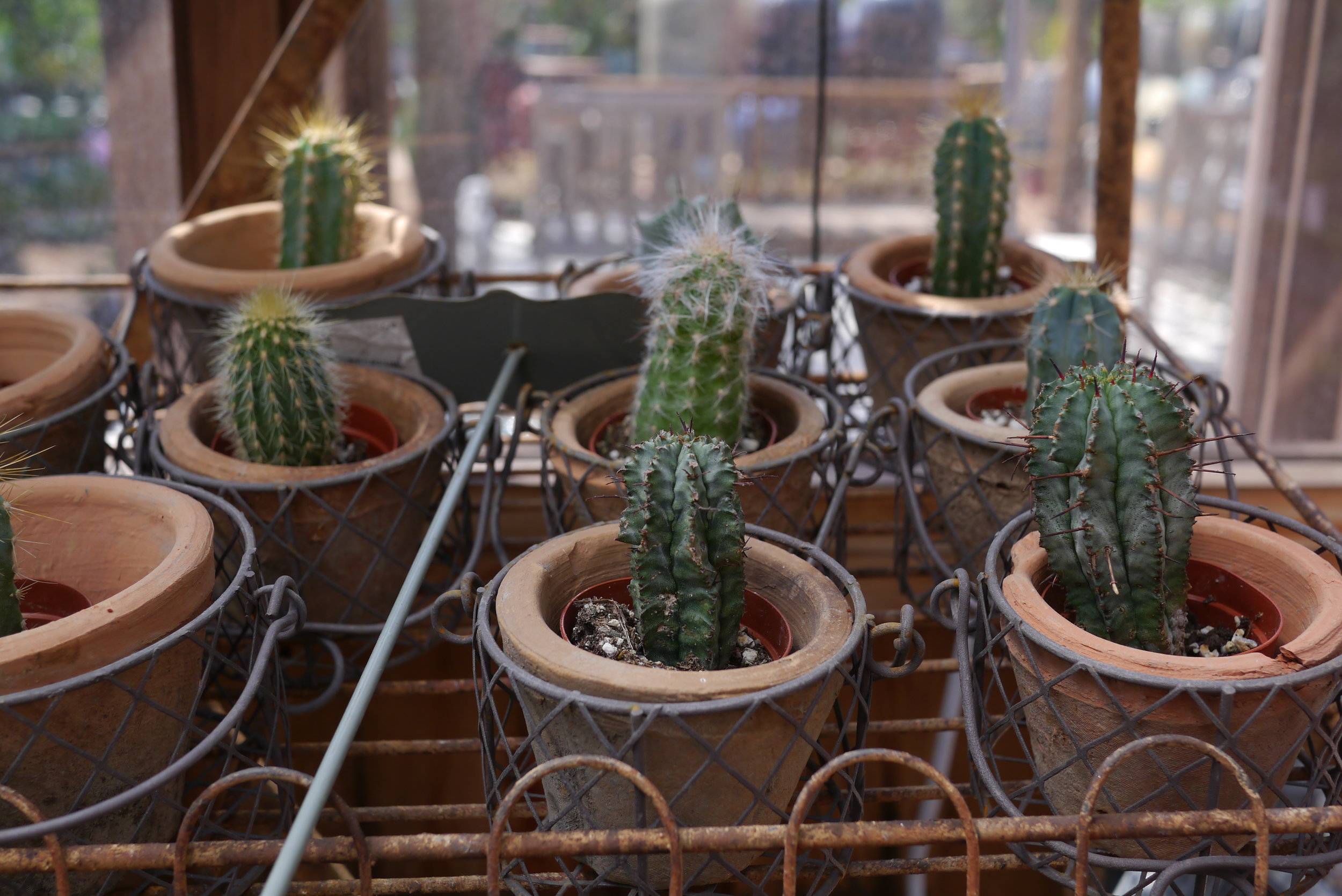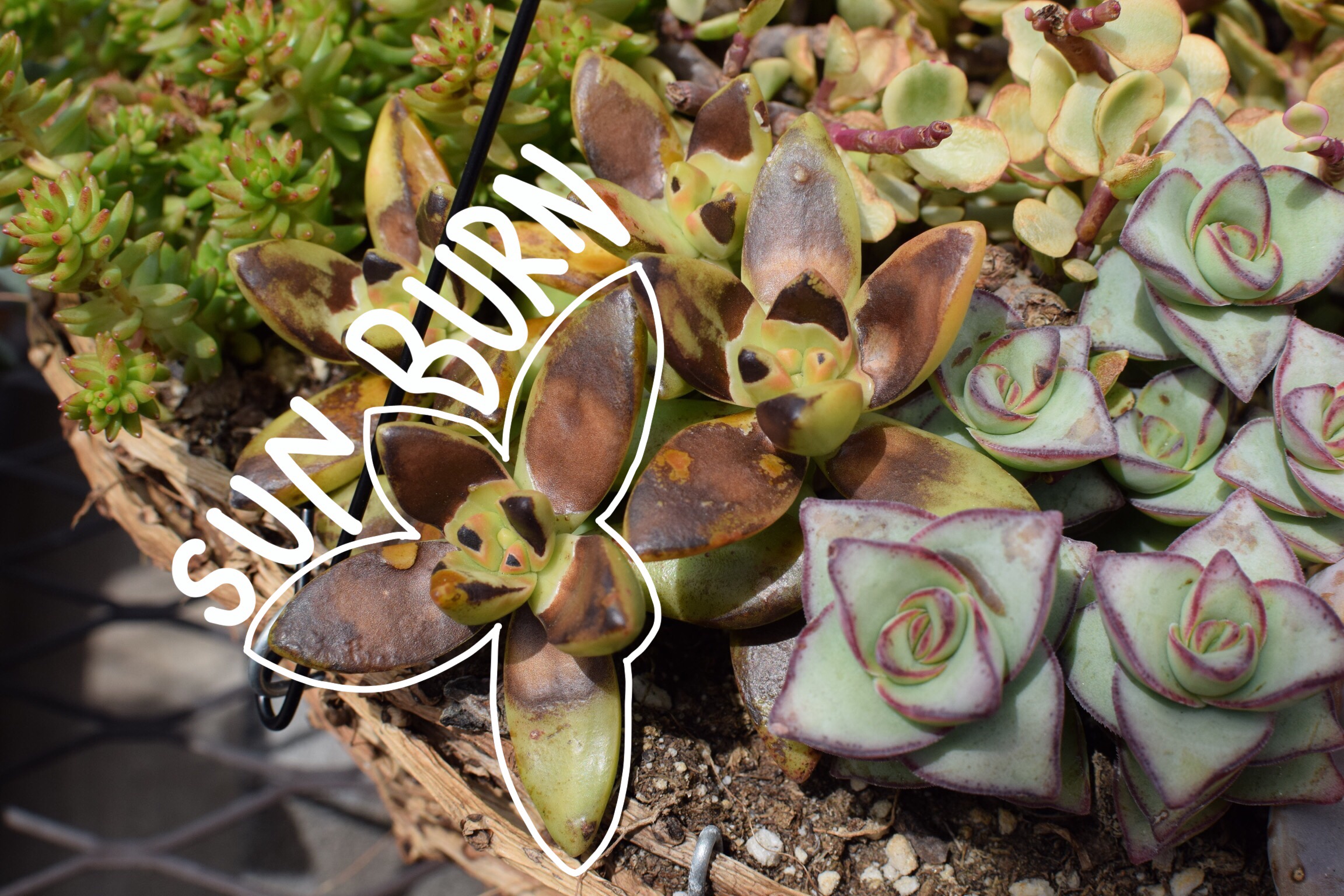Succulents are incredibly easy plants to care for. All they really need is a little bit of water and enough sunlight. They are very tolerant of neglect, and often some of the most forgotten about succulents can be easily coaxed back to health. However, when shopping for plants, there are signs to look for that will tell you that a succulent will not thrive or may require more work than expected. Earlier in this series we showed you how to shop for healthy succulents and signs your succulents might need more attention. Here we'll show you warning signs to look for when shopping that will tell you a plant might need more care so you can make the best decision before buying.
Glued-On Plants
Glued-on plants aren't bad on their own, but can require more care than the care instructions may have you believe. There are some beautiful boutonnieres and corsages sold for events (meant for use for probably only one night use) that make use of glued on succulents, like the gorgeous ones from Passionflower Sue, but these items are sold as accessories, not home decorations, and can be planted after the event is over. The items that require more care than the instructions allude to are the items sold as home decor with a live but glued plant. Succulents are not like air plants (tillandsia), and cannot get their needed nutrients from light misting. They have root systems that require them to be planted in soil or a growing medium for them to obtain nutrients and water. Succulents that are glued onto ceramic or wood will become etiolated and under-watered, and will die rather quickly from not getting enough nutrients and light.
If you do happen to acquire one of these plants, you can still rescue it however. These plants can be removed gently from their bases, and any damaged portions removed. You can then use the plant and any leaves that may have fallen off for propagations. The good thing about arrangements like these, if that you may be able to skip some steps in the propagation process. The cut end of the succulent will have most likely have already calloused over and begun to form roots (in its search for more nutrition), leaving you will a little fat plant that is ready to be planted in some soil!
What To Buy Instead
If you want a similar look, consider purchasing some air plants instead. You can attach them to ceramic and other surfaces with epoxy type glues like E6000.
Glued-On Flowers
Another tactic that sellers do to fool new succulent growers is gluing paper or dried flowers to succulents. Sellers do this to fool buyers into thinking that the cactus is flowering. These flowers can damage your plant once it grows or when it is removed. Real succulent flowers are far more colorful than these simulacrum of real flora that will fade and fall apart overtime. If glued on flowers are your aesthetic, that’s fine too, just remember that the glue will damage the plant as it grows or if it is removed.
What To Buy Instead
Most succulents and cacti naturally only bloom for a few days. If you're looking for something floral, consider getting a kalanchoe or certain varieties of sedum like the flowers in the vase below.
Painted Succulents
The worst (in my opinion) tactic that sellers use to fool new succulent parents is selling painted succulents and cacti. These plants are going to die very shortly after bringing them home, and you’ll often see them dying on store shelves. The reason painted succulents are bad is because the paint blocks sunlight from reaching the leaves, leaving the plant unable to photosynthesize and feed itself.
What to Buy Instead
If you are looking for a colorful succulent, instead consider one that is naturally colorful like a moonstone or graptopetalum, or even just plant your new succulent in a colorful pot. Several sellers on Etsy and Amazon sell naturally colorful succulents.
Bugs
After overwatering, bugs are the second fastest way to kill your succulents. Depending on your climate and area, succulents are susceptible to several types of insects like flies, mealy bugs, aphids and many more. Flies are mainly just a pest, but can quickly spread to other plants. Mealy bugs will make quick work of eating your succulent leaves, and aphids will also eat leaves and quickly begin to affect other house plants and food.
Organic methods to controlling bugs in your succulents exist and are very effective, and in my opinion more effective in the long term than using pesticides. To get rid of aphids, you can wash off your plant with a powerful rush of water and apply a mixture of water, dish soap, and cayenne pepper to the leaves to keep them away. Mealybugs can be removed and killed with a cotton swab dipped in alcohol to remove their webs and kill the bugs. Periodically check your plants and repeat as necessary.
Plants treated with Neonicotinoid Pesticides
I am not a stickler for organic gardening and (I will occasionally use miracle-gro on underperforming backyard tomatoes, or even use an organic pesticide if I see aphids or caterpillar lopers on my squash), however, I really beg you to not purchase plants with neonicotinoid pesticides that have been applied.
The best way to keep bugs from harming your succulents is to inspect all plants before you purchase them, and avoid buying ones visibly affected by insects. Once you bring your plants home, keep all new plants separated for a week or two to make sure there were no eggs brought in with them.
There is increasing evidence that neonicotinoid pesticides affect bee populations and are the cause of colony collapse disorder. If you need to use pesticides, research the ones you use first.
What To Buy Instead
Instead, buy any other plant not treated with these pesticides. To be sure that you're avoiding them, shop at organic nurseries or ask the staff where you are shopping what pest control methods they and their suppliers use.
Over-watered Succulents
Giving succulents too much water is the fastest and most effective way to kill them. Too much standing water in the soil can lead to a condition called root rot which can spread up the plant and quickly kill it.
You can easily tell an overwatered succulent by looking for mushy and translucent leaves, or looking for black rotted segments. An overwatered succulent can only be saved by cutting off the affected areas with a sanitized sharp blade, and letting the cut area callous over and re-root.
What to Buy Instead
Look for succulents and cacti with dry soil when you're shopping.
Grafted Cacti
Moon cacti, those cacti you see that are a colorful sphere on top of a taller cactus are really cool, and are actually two cacti grafted together. I think these succulents are beautiful and are really interesting, and don’t want to discourage you from getting them, but want you to know more about them to avoid heartbreak after a few years.
Moon cacti are two cacti grafted together, that have fused together and share nutrients and a vascular system. The colorful cacti on the top, called a Hibotan cactus, although it is very colorful, is considered an albino plant. It’s colorful colors come from a lack of chlorophyll, the needed chemical for plants to photosynthesize and thrive. The hibotan cactus, since it lacks chlorophyll, can only thrive when grafted onto a root stock cactus. After about two years, depending on growing conditions, the rootstock cactus will reach the end of its life, or may begin rotting or drying out sooner. When this happens, the hibotan is still viable, but will need to be regrafted. Plenty of tutorials exist to show how to do this should you wish to perform this task. If you decide to purchase a moon cactus, just know that this is problem will arise in the future.
What to Buy Instead
Moon cacti still make great plants, but if you're looking for something with less long-term maintenance, consider another colorful succulent or pot.























